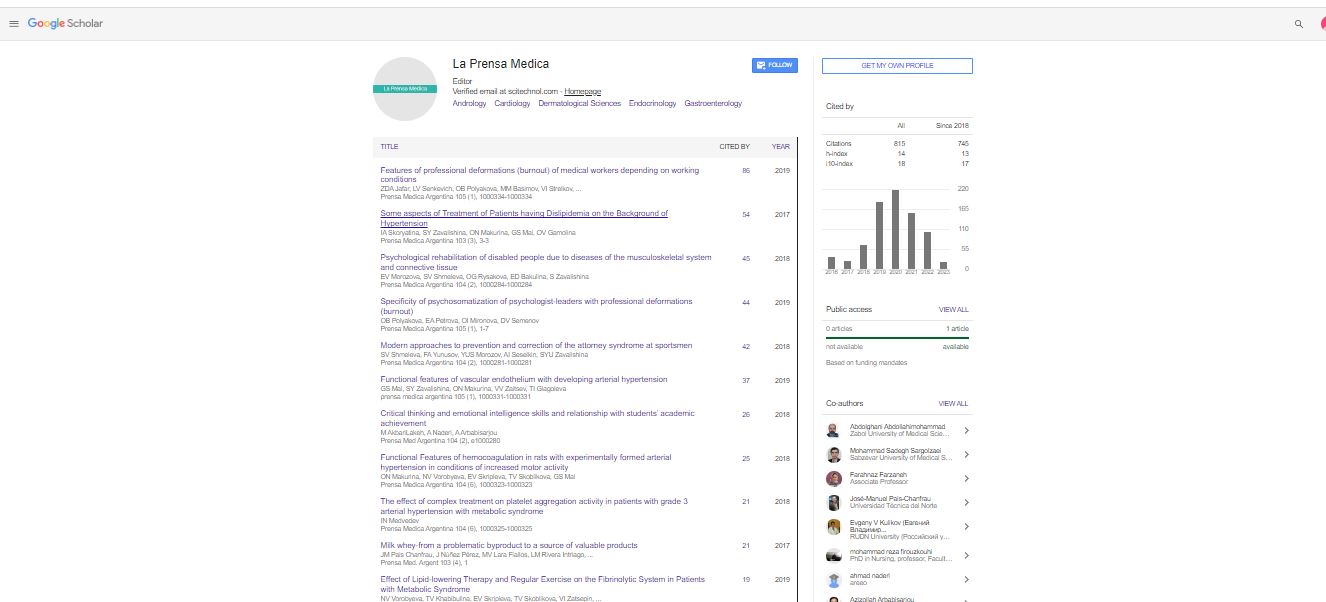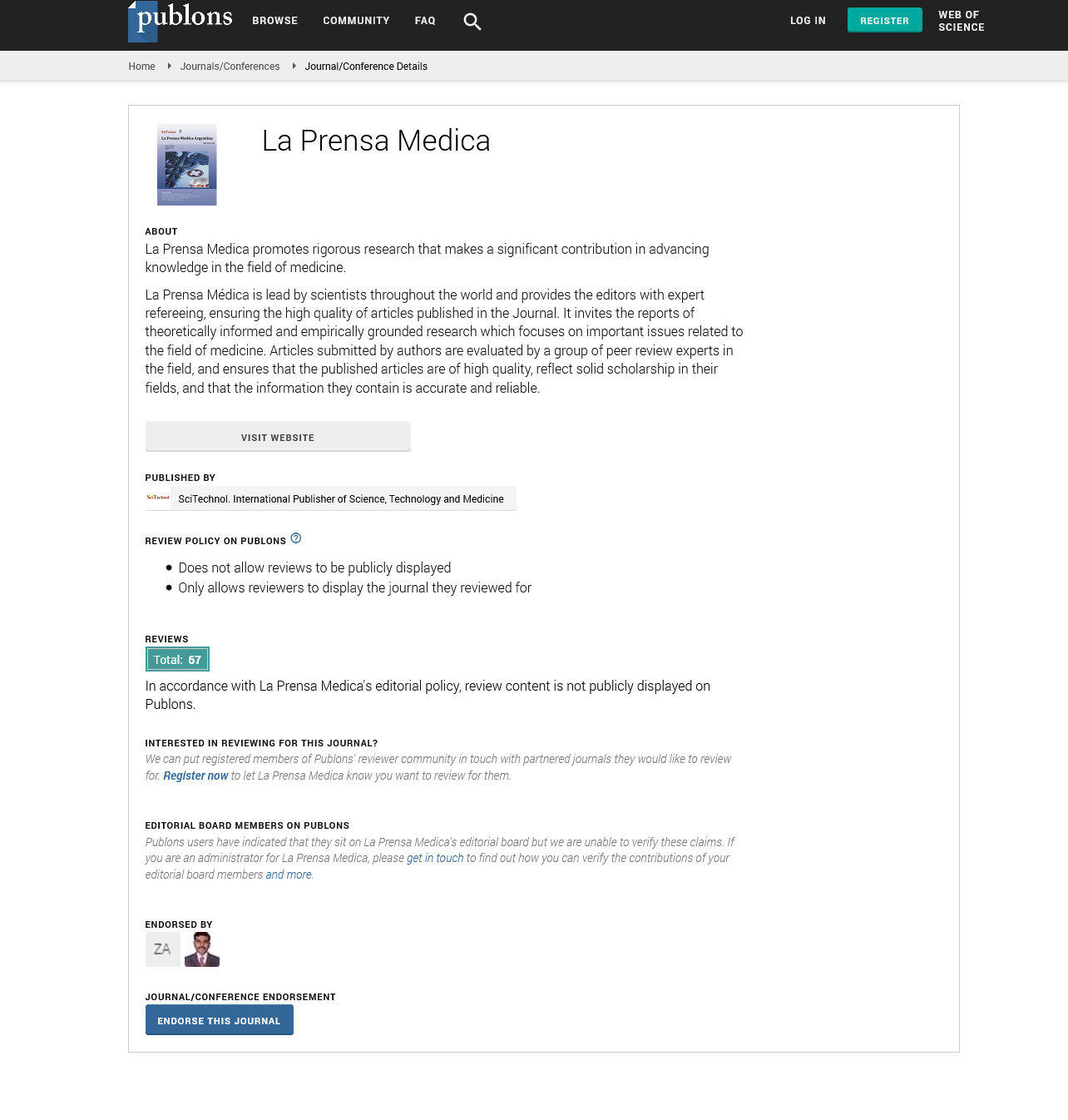Perspective, La Prensa Medica Vol: 108 Issue: 1
Orally Sodiac Fluorescein Allows for Real-Time Ureteral Imaging
Jiwu Zeng Zhang *
Department of Medicinal Materials, Johnson Medical School, New York
Corresponding Author: Jiwu Zeng Zhang
Department of Medicinal Materials, Johnson Medical School, New York
E-mail:weirongrui2011@163.com
Received date:03 January, 2022, Manuscript No. LPM-22-57659;
Editor assigned date: 05 January, 2022, PreQC No. LPM-22-57659 (PQ);
Reviewed date: 19 January, 2022, QC No LPM-22-57659
Revised date: 24 January, 2022, Manuscript No. LPM-22-57659 (R);
Published date: 29 January, 2022, DOI: 10.4172/0032-745X.1000124
Citation: Zhang JZ (2022) Orally Sodiac Fluorescein Allows for Real-Time Ureteral Imaging. La Prensa Medica 108:1.
Keywords: Refractive Surgery, Surgery, demographic
Description
Billion populations are elderly, who spent considerable money from out-of-pocket for healthcare. Any policy for elderly should encompass financial protection from illness expenditure. However, lack of comprehensive information on OOP expenditure and its determinants, precludes such action. We studied a sample of 400 community-dwelling elderly in rural India, to assess cost incurred on outpatient and inpatient services, along with information on socio-demographics (individual-characteristics), morbidity and social-engagement. Lubber Social Network Scale was used to assess the degree of social isolation. Multi morbidity was measured by Cumulative Illness Rating Scale for Geriatrics. Mental health status was measured by the SF-12 mental component summary score. The mean annual OOP expenditure was with a median of USD being explained significantly by sex, statuses of morbidity, social engagement, and mental health. In developing countries like India, information regarding different sub-headings of out of pocket expenditure on health (expenditure during visit to a formal doctor non-formal doctor, over the counter purchase of medicine, medical aid purchase) is the basic input of targeted policy intervention whose evidences are provided in the present study. We recommend that the policy for health of elderly persons in India should take into account of financial protection. The policy should consider pre-payment mechanism like health insurance, as one of the components for providing financial protection.
Out-Of-Pocket (OOP)
Under the Public Health Insurance Programs for the poor only the hospitalization services and expenses associated with inpatient care are covered. It is expected that the health insurance for the poor will increase utilization of hospital services by the BPL households who would usually be forced to postpone their non-urgent procedures for a later time because of cost. Even with insurance, there may be OOP payments for drugs, tests and post-treatment care which are not covered by the health insurance. Therefore, hospital insurance may actually end- up increasing the OOP payments for inpatient and inpatient-related care for the poor. Hence the direction of effect of the Poor People Health Insurance Programs on total inpatient OOP health expenditure is unclear. Also, RSBY may lead to misuse of services, since both the physician and the patient have the incentive to convert an outpatient case into an inpatient admission, leading to unnecessary utilization. The objective of this research is to examine the effect of Public Health Insurance Programs for the Poor on incidence of hospitalization and inpatient OOP health expenditures. The increase in health insurance coverage may lead to increase in health care utilization because of the change in behavior of the insured as well as the health care provider in the USA found that there was a 61% reduction in inpatient hospital admissions and 40% reduction in emergency department visits among the uninsured population compared to insured population with similar socio demographic characteristics. Evidence from literature has shown that increased health insurance coverage leads to increase in utilization of health services, but the effect of health insurance coverage on financial risk protection is less clear, especially for poor beneficiaries. This is because, there are two opposing forces in play due to increased coverage of insurance; one aspect is the increased and utilization due to insurance coverage, which increases total health care cost and second, even with lower OOP rates per service, total OOP may actually become higher due to higher utilization.
Community-Based Health Insurance
The health insurance for the poor in India covers only inpatient services. This creates an incentive for the patients to visit hospitals and get hospitalized, instead of using basic primary health care services. Issues related to program enrolment barriers in implementation of the program, effect of information campaign, hospitalization patterns and determinants of participation in the program. There are only two district level studies on RSBY, one done in Amravati district in Maharashtra and the other in Gujarat that showed increased hospitalizations and higher OOP health expenditures among the RSBY insured individuals. RSBY enrolls experienced higher OOP health expenditures because they had to pay for medicines and diagnostics during the hospital admission. Most of other studies that studied the effect of health insurance on hospitalizations and OOP health expenditures were community-based health insurance programs in different parts of the country and thus limiting its usefulness for national decision-making. This study is a considerable improvement over other studies on public health insurance programs for the poor in India on two important counts the study evaluates the effect of public health insurance programs for the poor by comparing outcomes between poor people enrolled and not-enrolled in the insurance program. Many studies are based on RSBY enrollees alone and do not have any controls making it difficult to identify the effects of the public health insurance programs for the poor.
 Spanish
Spanish  Chinese
Chinese  Russian
Russian  German
German  French
French  Japanese
Japanese  Portuguese
Portuguese  Hindi
Hindi 

